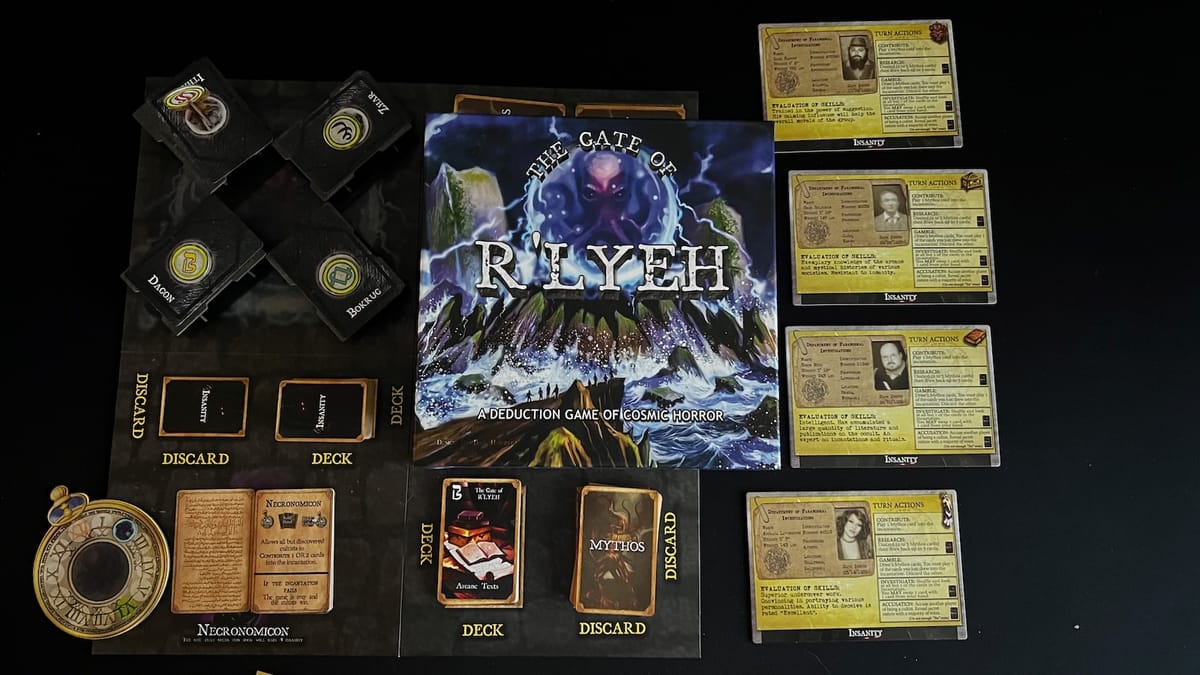
The world of hidden traitor and social deduction games has been a bit saturated over the years. In recent memory, we’ve gotten one of the best of all time, Blood on the Clocktower, a reimplementation of a classic with Unfathomable, not to mention all the hidden werewolves and politicians out there. Hidden traitor games are a special breed and, in my opinion, mostly depend upon the group of people you are playing with. With The Gate of R’lyeh, my experiences were not overly amazing, but the setting that I was in and the group I played with changed it from a rough experience to something fun.
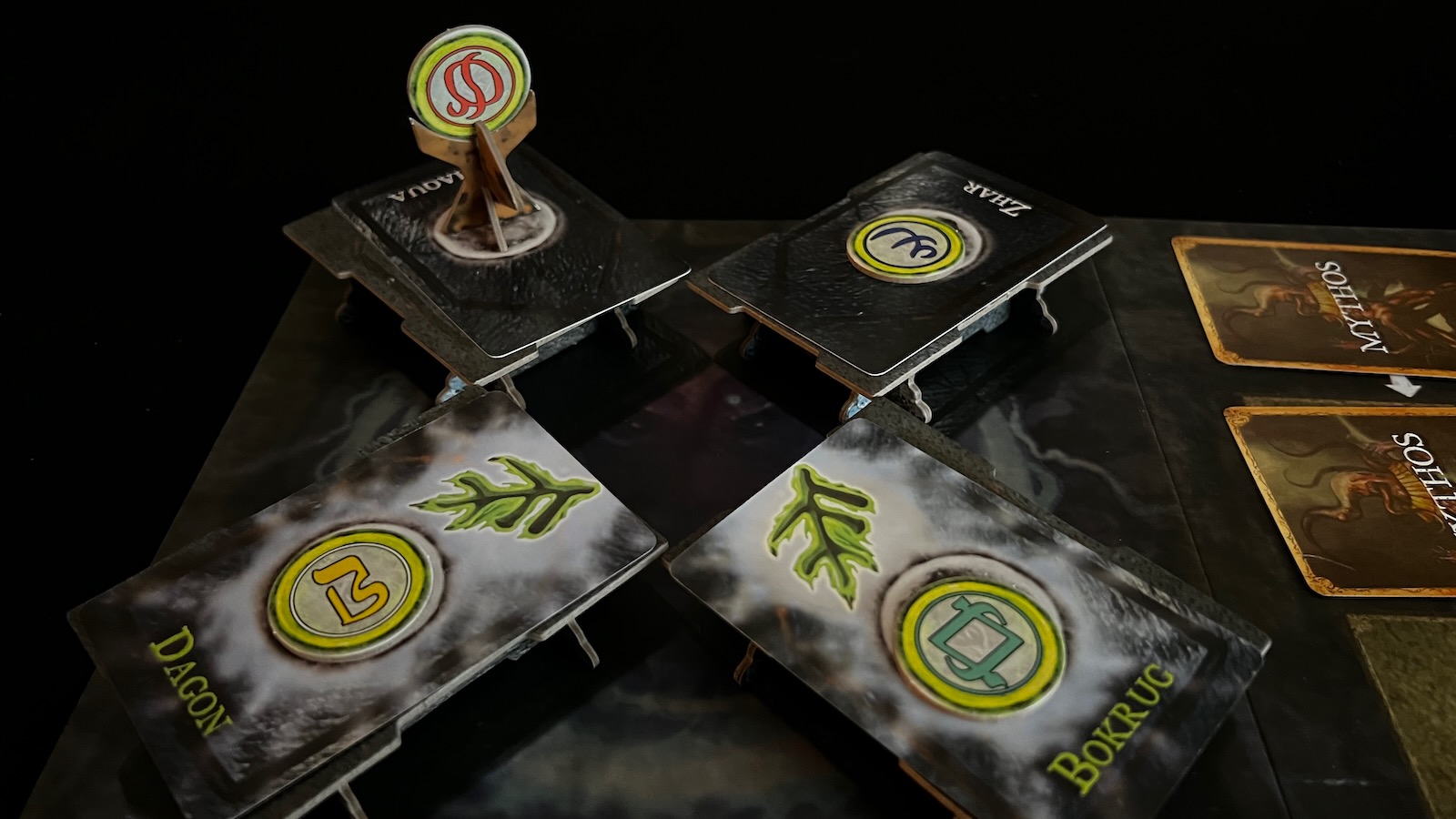
The Gate of R’lyeh is a cooperative hidden traitor game set in the mythos of H.P. Lovecraft. You and a group of investigators are sent to the gate to cast incantations to reinforce the seals on Cthulu’s prison. Players achieve this by matching symbols from mythos cards to each of the four seals. Players are battling against hidden cultists, a ticking clock, and the slow descent into insanity. If players can create all four seals by the time the clock strikes midnight, then the investigators win, if not, the hidden cultists win.
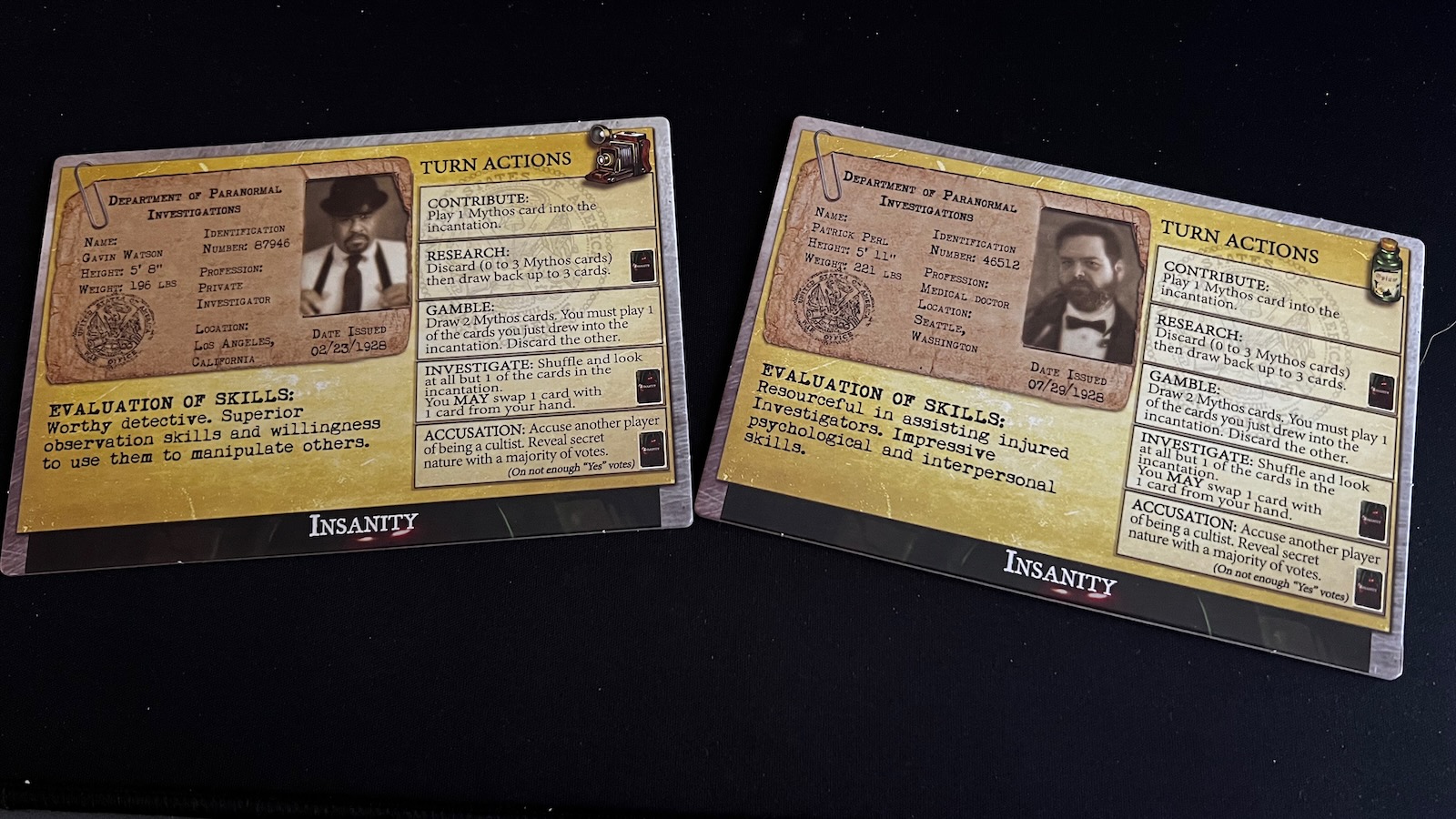
At the beginning of the game, players get a reference card with a special identity on it. These identities have little impact on the game unless playing with advanced rules. Players will also receive a yes/no voting token, 3 mythos cards, and a secret identity denoting an investigator or a secret cultist. Mythos cards are cards denoting different symbols that investigators can add to the incantation matching the active seal. Cultists can add non matching seals and opposite seals to throw off the incantation.
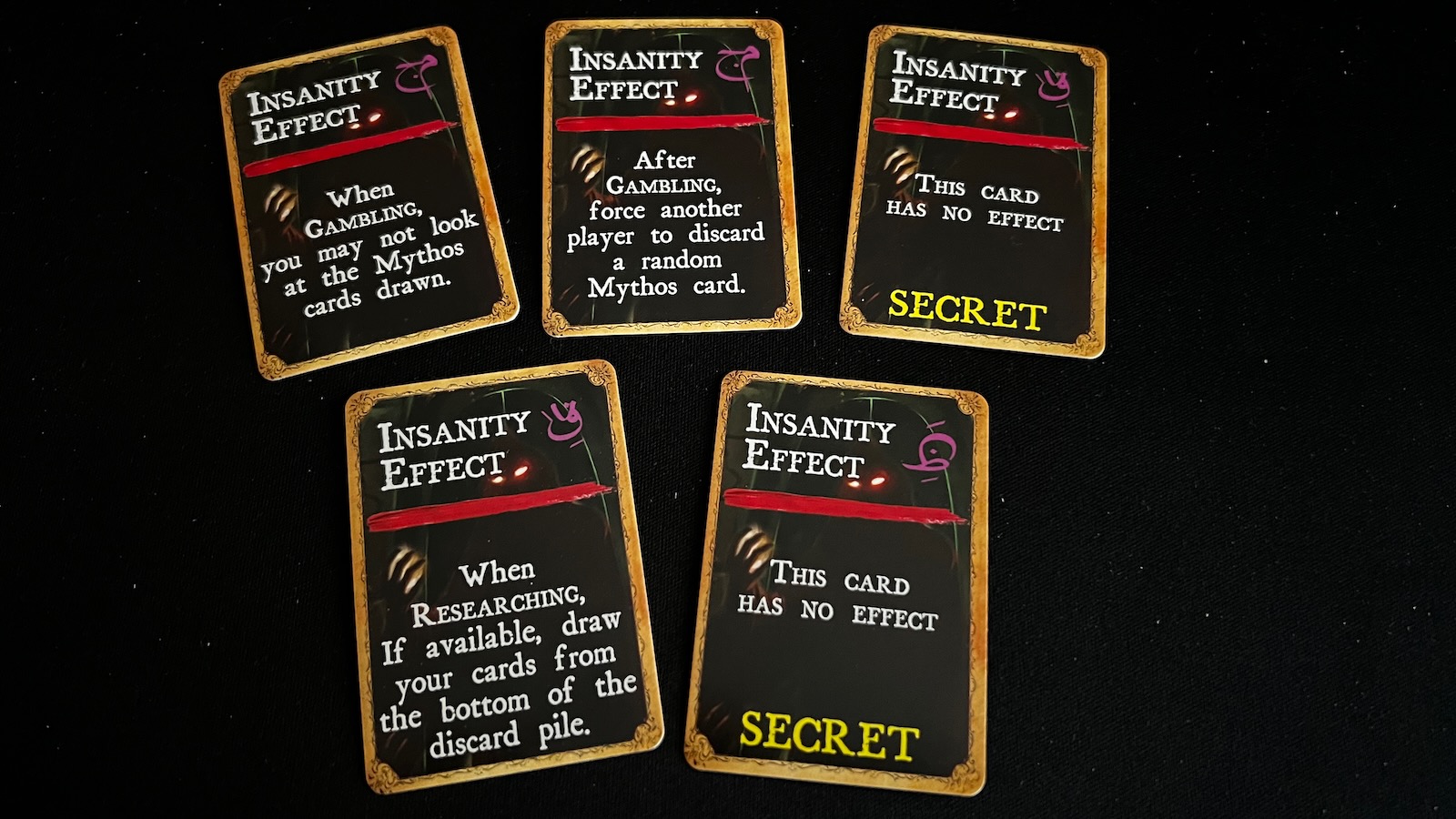
Insanity cards can throw a wrench into a player’s game. Some insanity cards don’t have any effects, but many will control the actions a player can take, make a player lose cards, or control their vote. In one game, a player got insanity where they could only vote yes and could only take an accusation action on their turn.
On a turn, players can take a variety of actions:
- Adding a card to an incantation.
- Researching to discard cards from their hand and draw back up to three mythos cards and also gaining insanity.
- Players can gamble by drawing two cards from the mythos deck and adding one to the incantation.
- Investigating lets a player look at all the cards in the incantation and trade one from their hand while also gaining an insanity card.
- Accuse another player of being a cultist. This action can only take place after the time marker has hit 6 on the clock. Players can discuss and then they will vote. If a cultist is successfully revealed, then the player will flip their board and have limited actions. If an investigator is falsely accused, the time marker will move two more spots to midnight.
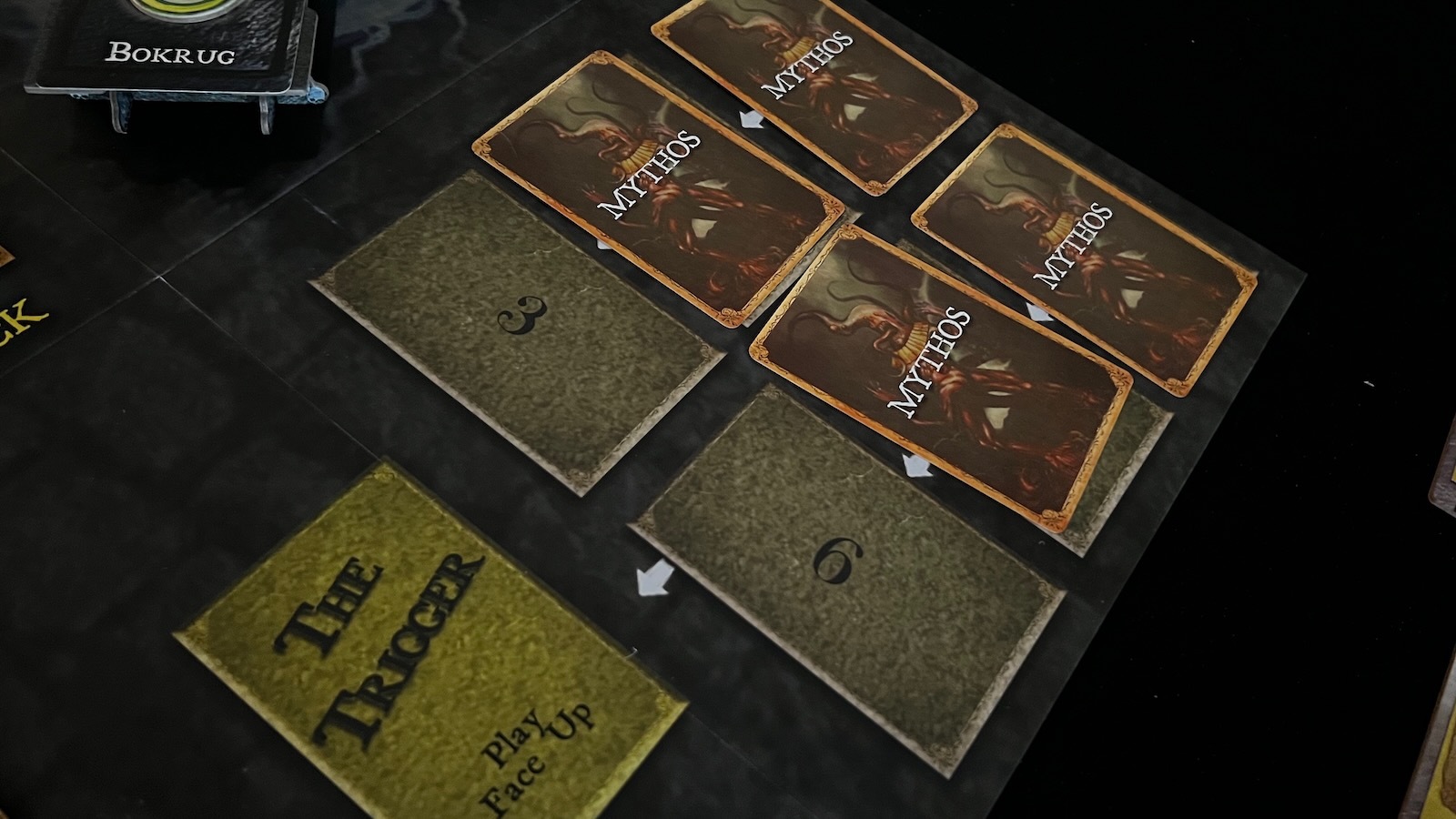
Revealed cultists have a slightly different set of actions and are not affected by insanity. Players can still contribute cards to the incantation. Cultists can also plot to draw cards. Cultists are allowed to attack other players and make them discard mythos cards. Cultists are no longer allowed to accuse or or vote and will not count towards the total number of players when determining majority.
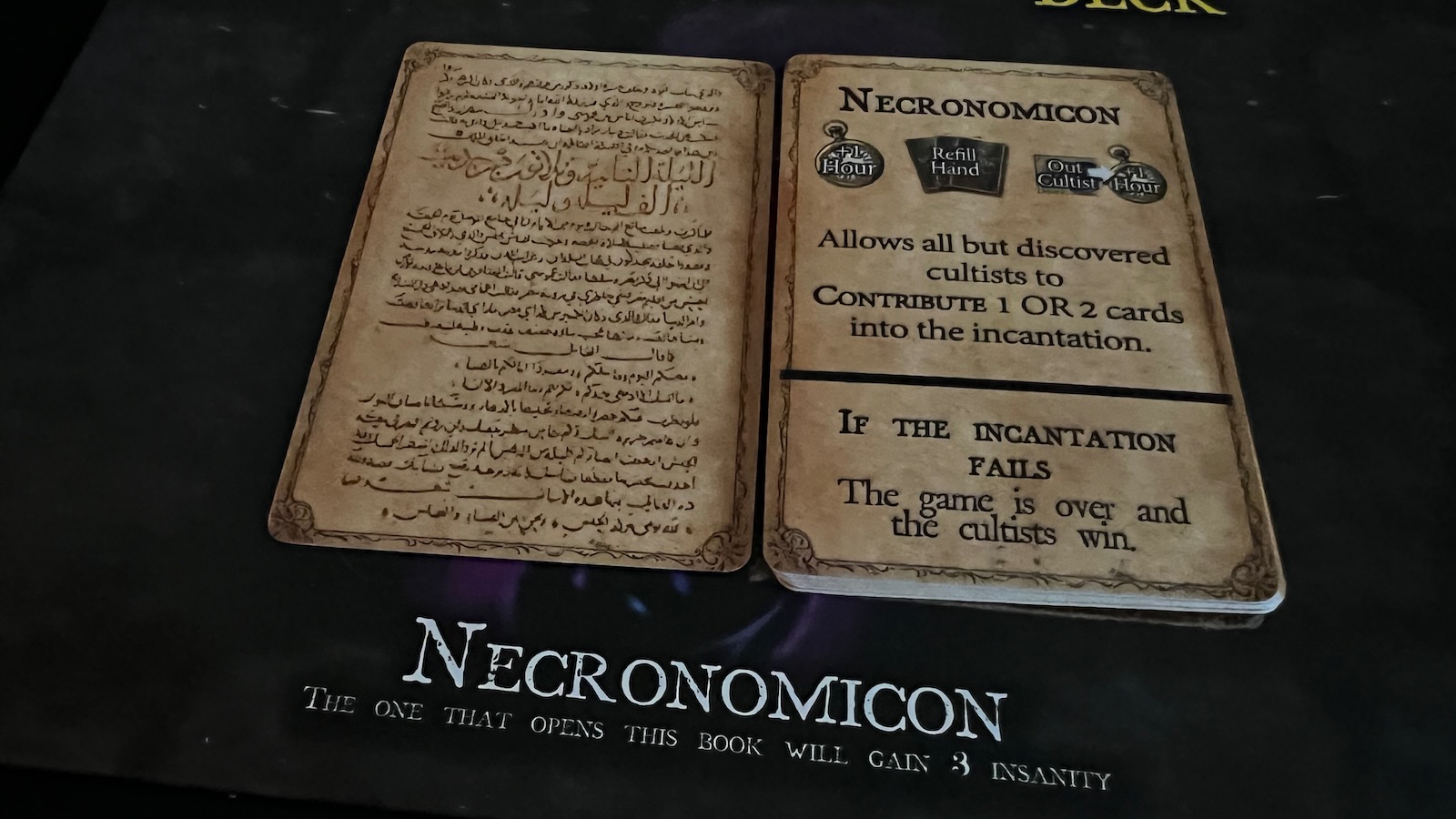
Another mixed bag of tricks at the investigator’s service is the Necronomicon. A vote is taken before a player’s turn on whether to open the book. The opening player will immediately take 3 Insanity cards. When open, the time advances by an hour unless players are able to out a hidden cultist where the hour will be added back. A successful incantation will close the book, while a failed incantation will end the game for the investigators. Each page of the Necronomicon will give a special ability to the players.
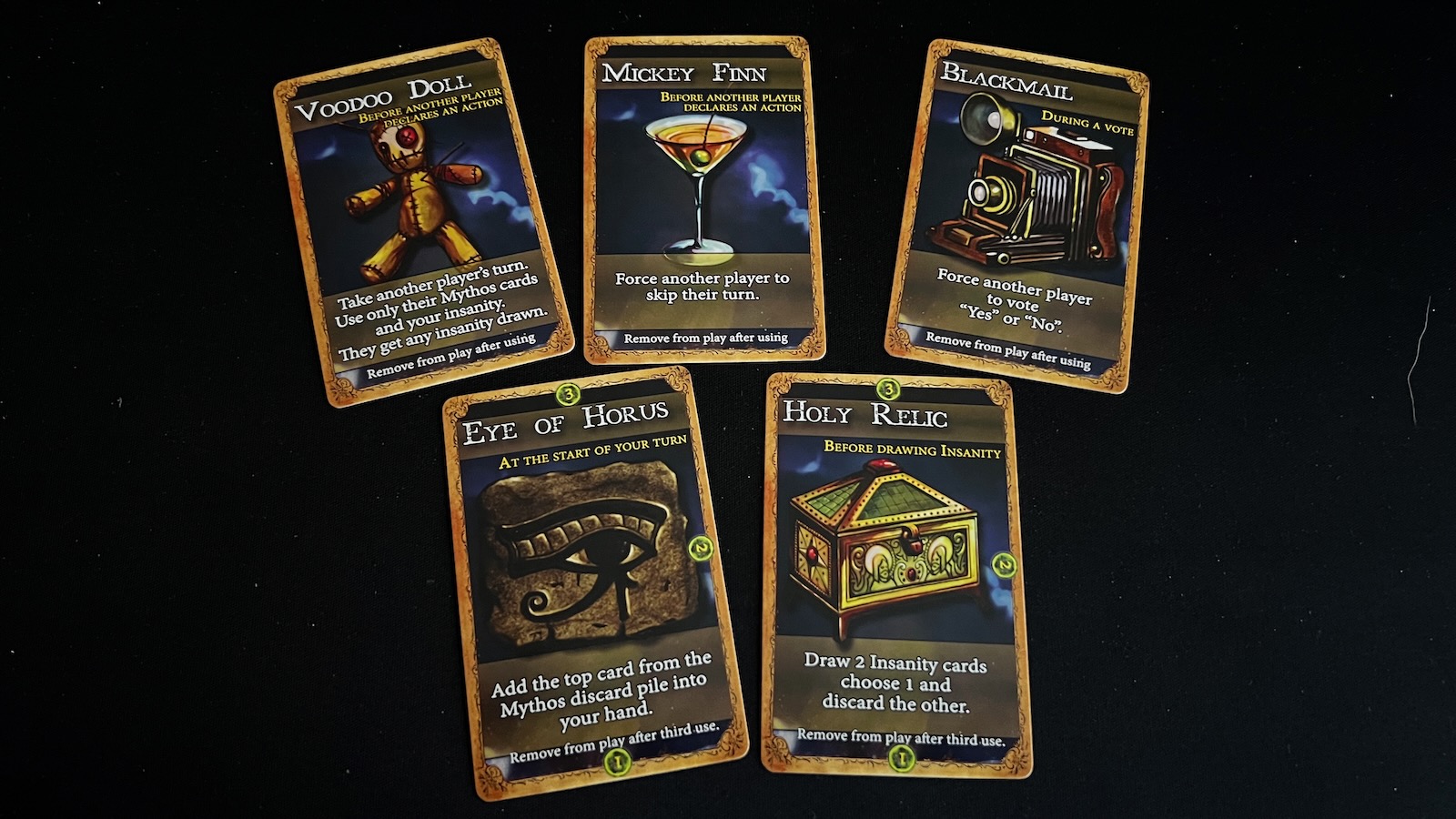
A number of advanced rules can be added to the game. Each investigator card has a special one time use item that is unique to the player. These include voodoo dolls, opium, a pistol, and others. Artifacts are a set of cards that can be shuffled into the Mythos deck to add some special abilities to players who draw them. The Insanity Limit rule limits the number of cards in the Insanity deck. If the deck runs out, then the group loses. Another rule, which was left out of the rulebook and only found after scouring the internet, is adding different elder god cards to the gateway. Each god changes the requirements or outcomes of incantations when sealing the card. For example, Hastur will give an hour back when successfully sealed, but will take an hour away if the incantation fails.

The quality of production is a mixed bag. The cards are of a decent quality and the cardboard used for the altars and the player boards is thick and holds up to the wear and tear of the game. The altars and the sigil holder also need a bit of glue if they want to survive through a round of gameplay. The artwork and general feel of the game is a whole different story. Each of the player boards feature a high definition image of a modern person that has been weathered in photoshop to make them look like a period piece. The characters look too modern and I was frightened by the resemblance of George Castanza from Seinfeld during one of my plays. While artwork was definitely not the focus of the game, good artwork can help with the immersion of the experience.
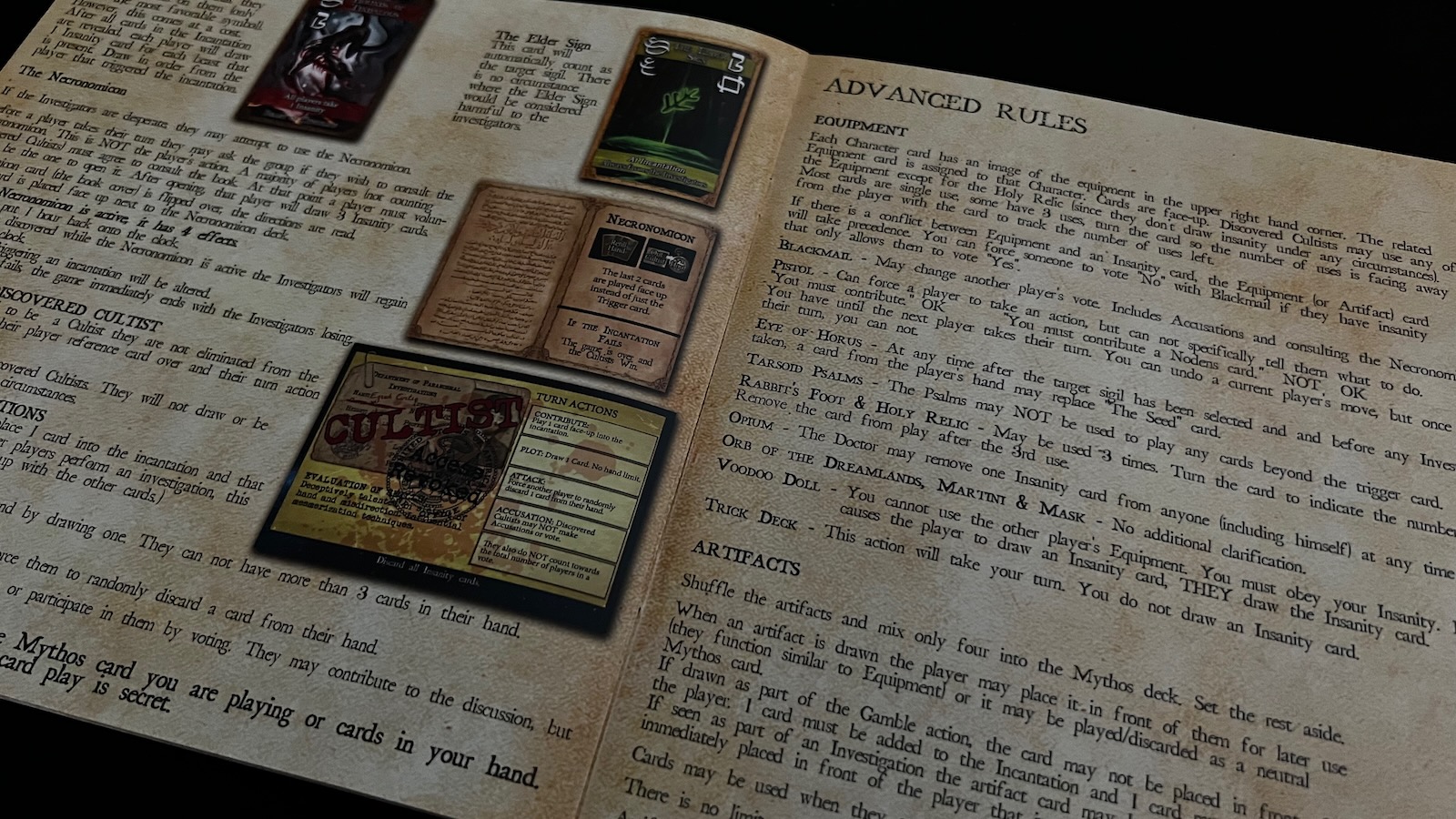
Another issue I had with the game is the rulebook. While pretty straightforward, one of the advanced rules was missing entirely. A number of cards were apparently changed in production, but the change wasn’t made in the book, leading to some confusion. I also believe that many of the advanced rules could have been implemented into the game from the get go.
The gameplay, again, depends solely on the crowd you play with. You need to have a group that is invested and wanting to discuss, accuse, and take on the role of the game. Group one was a group of core gamers who had a lot to say about the artwork and the missing rules. The second group was a mixed group of newer gamers and core gamers and were given a little bit more about how to act and get into the game. When you have the right combination of players, like Group 2, you are in for a relatively quick and fun experience. The hidden traitor mechanic shines in a few ways. First there are consequences to accusing someone, so you need to make sure you know who it is before casting a vote. The Necronomicon is also a fun mechanic. It is there if needed, but can have dire consequences if the players fail to cast an incantation. In one playthrough, the hidden cultists were able to sabotage the incantation while the book was open and end the game. In another playthrough, the group used the Necronomicon multiple times to out cultists and advance through the game with the advantages. Insanity cards are also a mixed bag. Sometimes they don’t affect anything, while other times they can pile on conditions. Adding in the limited Insanity deck, where only a fraction of the insanity cards are used in the game, can definitely change the strategy of the game since the team loses if the deck runs out.
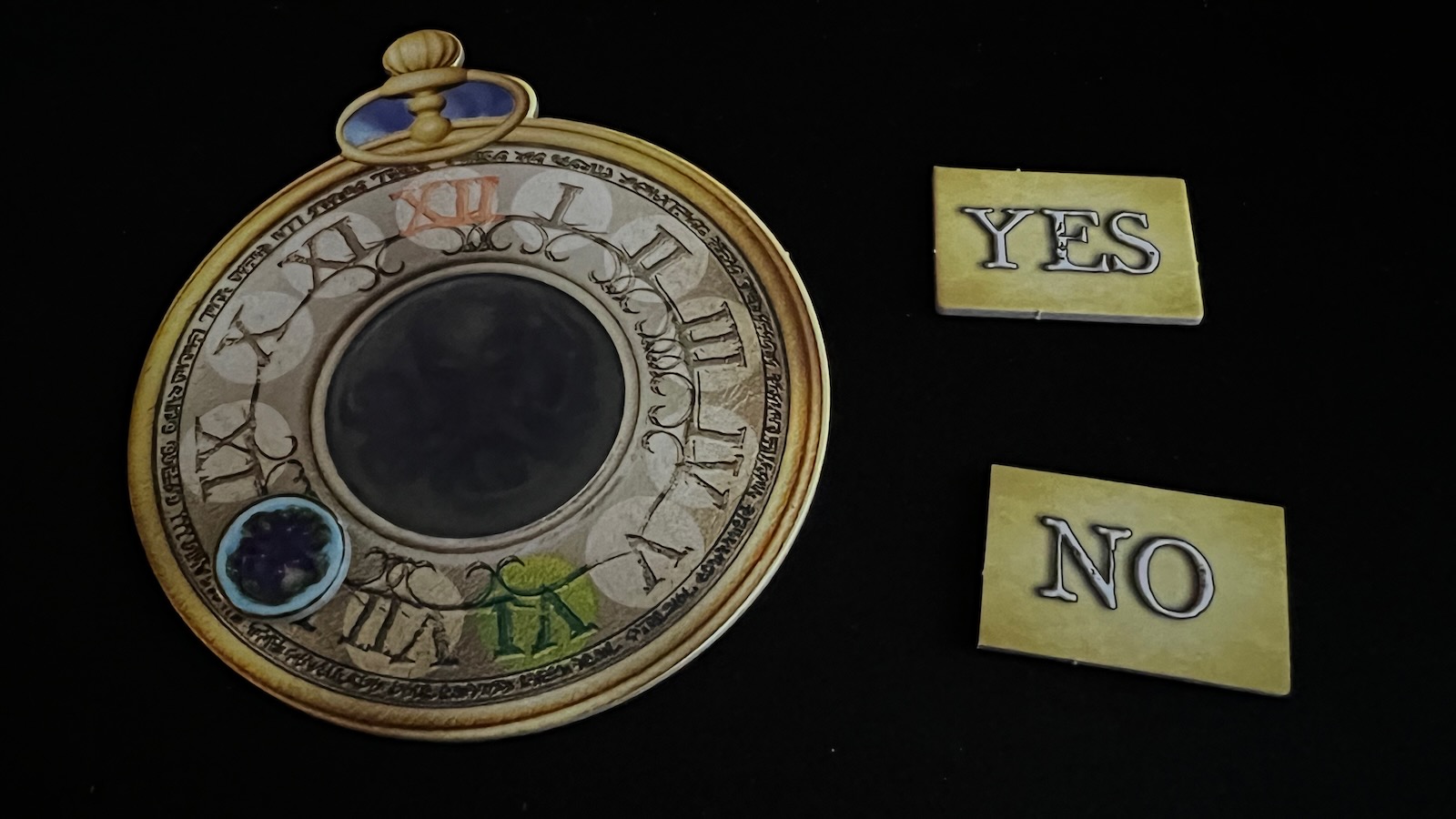
At the end of the day, I’ve got mixed feelings about the Gate of R’lyeh. I can’t come out and say that this game is bad. The artwork is a bit rough and more time could have been spent shoring up the rules, but this isn’t enough to tank the game for me. I legitimately had fun while playing it when the right group of people is around. When it comes to the theme, the public domain mythos of Lovecraft is a well that many have been to and seems to be running dry. My biggest problem is that in a world saturated with Lovecraft and full of hidden traitor and social deduction games, my capacity is full and I don’t see this getting to the table often.
The Gate of R'lyeh
All Right
A cooperative hidden traitor game where a team of 4-8 investigators try to trap Cthulhu in his prison. A game for those who are new to the hidden traitor mechanic, love the Lovecraft mythos, and don’t mind a few rules questions. Experienced players may find this game wanting.
Pros
- A fun take on the hidden traitor mechanic
- Quick gameplay to keep new gamers engaged
- Some fun mechanics themed to the Lovecraft mythos
Cons
- Artwork is a bit pedestrian
- Rulebook missing some points and needs some editing
- Enters a crowded party with mechanic and theme
